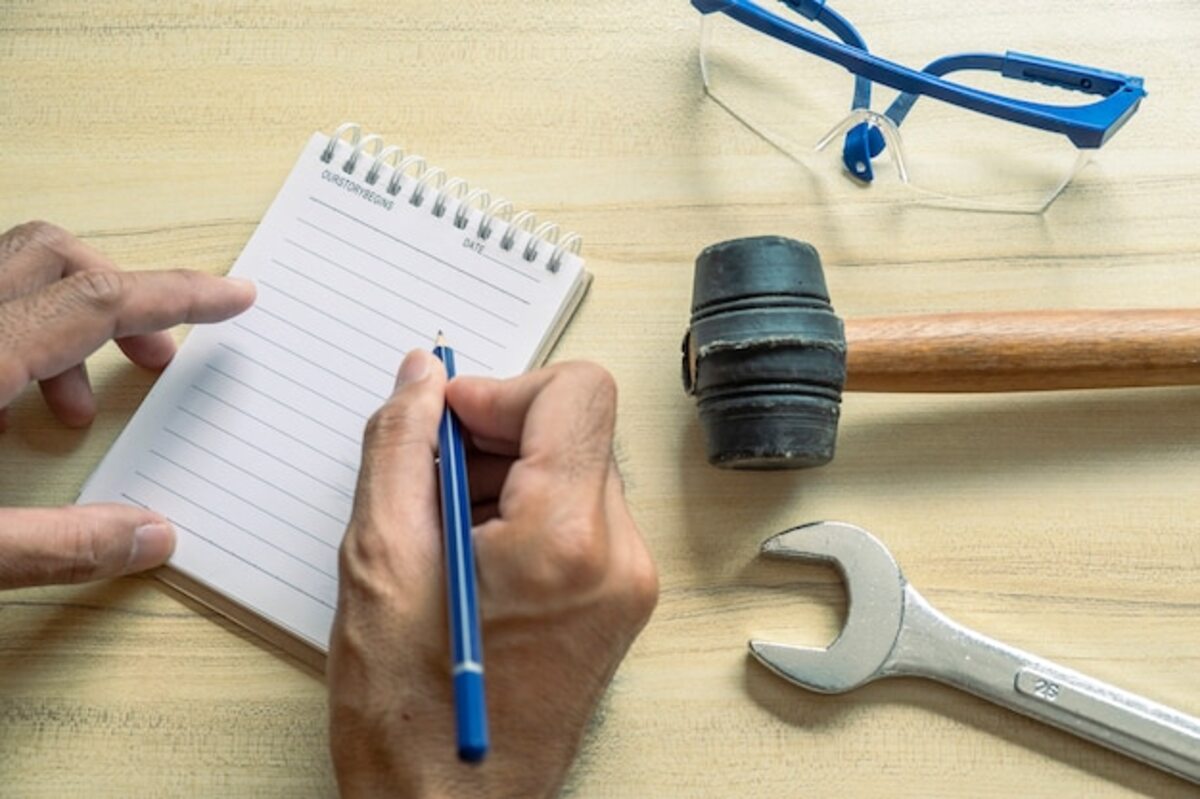How to select the right equipment for technical inspection

Selecting the right equipment for technical inspection is crucial to ensure safety and efficiency in any project. In this article, I will guide you through a simple and effective process that will allow you to choose the necessary tools to successfully carry out your inspections. From measuring devices to specialized software, you will discover how each element can make a difference in your work. Get ready to optimize your purchase and ensure reliable results in each evaluation.
Importance of a good equipment choice in technical inspection
A good choice of equipment in technical inspection is essential to ensure not only the quality of the work performed but also the safety of everyone involved in the project. Inadequate equipment can lead to erroneous results, which could result in costly mistakes or even jeopardize the integrity of the evaluated structures. By selecting appropriate tools, it is guaranteed that each measurement and each evaluation are accurate and reliable, which is essential to meet the required standards and avoid future issues.
Additionally, investing in the right equipment can significantly optimize time and resources during the inspection process. Modern and appropriate tools not only facilitate work by making tasks more efficient, but they also enable faster and more effective data collection. This is especially important in large projects where time is a critical factor. Thus, a careful choice of the right equipment not only improves the quality of the work but also contributes to a more efficient overall project management.
2. Types of essential equipment for different types of inspection
When conducting a technical inspection, it is essential to have the appropriate equipment that adapts to the specific needs of each type of evaluation. There are various essential tools that vary according to the field of inspection, such as construction, electrical safety, or environmental assessment. For example, in the construction field, tools like laser measurers and bubble levels are indispensable for ensuring accuracy in structural measurements. In contrast, for an electrical inspection, a multimeter and a thermal camera are crucial for detecting issues that could compromise the safety of the electrical system.
In addition to physical devices, it is also important to consider specialized software that can complement traditional tools. Project management programs or mobile applications allow for real-time recording of findings and instant generation of detailed reports. This not only optimizes the inspection process but also ensures effective communication with all parties involved in the project. When selecting the right equipment, be sure to evaluate both physical tools and available digital resources, as both are essential for successfully conducting any technical inspection.
3. Factors to consider when selecting inspection tools
When selecting inspection tools, it is essential to consider the accuracy and reliability of the instruments. Accurate measurement is key to obtaining useful results and avoiding errors that could compromise the safety or quality of the project. Researching the technical specifications of each tool, as well as reviews from other users, can be very helpful in determining if a device meets the required standards. Additionally, make sure that the equipment is properly calibrated and has relevant certifications that support its performance.
Another factor to consider is the versatility and adaptability of the selected tools. In many cases, a single device must be able to perform multiple functions or adapt to different work environments. This not only optimizes the use of time and resources but also reduces the need to acquire additional tools that can unnecessarily increase costs. Therefore, look for options that offer multifunctional features or that are compatible with additional accessories to expand their utility in various situations.
4. Comparison between manual and digital equipment: which one to choose?
When considering the choice between manual and digital equipment for technical inspection, it is important to assess the specific needs of each project. Manual tools, such as measuring tapes or spirit levels, offer simplicity and reliability that do not depend on batteries or advanced technology. They are often more cost-effective and easier to use, making them an ideal option for those seeking basic yet effective tools. However, their use may be limited in terms of precision and efficiency, especially in tasks that require repetitive measurements or complex analysis. On the other hand, digital equipment has revolutionized the way technical inspections are conducted. Tools like laser measuring devices or digital thermometers provide quick and accurate readings, often with additional features such as data storage and connectivity to mobile devices. Although they tend to have a higher cost and require more advanced technical knowledge, their ability to perform complex measurements quickly can be invaluable in demanding projects. Ultimately, the decision between manual and digital equipment will depend on the type of inspection to be performed, the available budget, and the user's experience with handling each tool.
It is advisable to assess the environment where the inspection will take place; for example, if it is a small or hard-to-reach space, digital tools can significantly ease the work by providing precision without the need for multiple manual adjustments. In contrast, if the project has a more traditional approach or is intended for occasional use, manual devices may be sufficient to meet the needs without unnecessary complications.
5. Budget: how to balance quality and cost in your selection
When addressing the budget for the selection of technical inspection equipment, it is essential to find a balance between quality and cost. Investing in high-quality tools may seem like a significant initial burden, but in the long run, the durability and precision they offer often justify the expense. A good practice is to research and compare different brands and models, considering not only the price but also the opinions of other users and the manufacturer's reputation. Remember that cheaper equipment may result in additional expenses due to frequent repairs or premature replacements.
It is also advisable to establish a clear budget from the beginning and prioritize your needs. Determine which elements are essential for your work and which could be considered extras. By doing so, you can focus on those tools that offer you the best value for money without compromising the necessary features for effective inspections. Many times, opting for modular or scalable solutions will allow you to acquire what is essential now and add additional capabilities later without upsetting your finances. This way, you can ensure that every euro spent contributes to improving your technical inspection processes.
6. Recommendations on reliable brands and models
When selecting the right equipment for technical inspection, it is essential to consider brands and models that are recognized for their reliability and quality. Brands like Fluke, Bosch, and Leica have established a strong reputation in the measurement and inspection tools market. Their products often include advanced features that ensure accuracy and durability, which is crucial when it comes to conducting critical assessments. Researching the experiences of other users and reading reviews can be helpful in identifying which models offer better performance in specific situations.
Furthermore, do not underestimate the importance of after-sales support and the availability of spare parts when choosing your equipment. Many times, a model may excel in terms of technical specifications, but if it lacks good customer service or easily accessible parts, it could become a burden in the long run. It is advisable to opt for brands that offer comprehensive warranties and efficient technical service, thus ensuring that your investment is protected. In the end, choosing reliable equipment not only optimizes your inspection processes but also provides you with the peace of mind needed to focus on the quality of the work done.
7. Equipment maintenance: key to prolonging its lifespan
Proper maintenance of technical inspection equipment is essential to ensure its optimal performance and prolong its lifespan. Regardless of how advanced the device is, without regular care, its effectiveness may be compromised. It is advisable to establish a maintenance program that includes cleaning, calibration, and periodic checks. This not only prevents unexpected failures during inspections but also ensures the accuracy of the measurements and results obtained. Investing time in maintenance may seem like an additional task, but in the long run, it translates into savings and confidence in the equipment.
Additionally, it is crucial to follow the manufacturer's instructions regarding the use and storage of the equipment. Many tools come with manuals that provide specific recommendations on how to handle and care for them properly. By adhering to these guidelines, the risks of damage due to misuse or inadequate conditions are minimized. On the other hand, educating the staff about the importance of maintenance also plays an essential role: well-maintained equipment reflects an organizational culture committed to quality and safety in every inspection conducted. In summary, maintenance not only extends the lifespan of the equipment but also ensures reliable results in every technical evaluation you perform.
8. Technological trends in the technical inspection team
As technology advances, technical inspection tools also undergo significant evolution. Current trends focus on the integration of smart devices and advanced software that facilitate the work of inspectors. For example, the use of drones for aerial inspections allows for a faster and safer assessment of hard-to-reach infrastructures. Additionally, equipment such as thermal cameras and 3D laser scanners provides accurate data on the condition of materials and structures, helping to identify issues before they become costly repairs.
Similarly, the development of mobile applications and cloud platforms has changed the way technicians collect and share information. These tools not only allow for documenting findings in real time, but also facilitate collaboration among different professionals involved in a project. The digitization of the inspection process improves efficiency by reducing human errors and streamlining communication. When considering the available technological trends, it is essential to choose those solutions that align with the specific needs of the project, thus ensuring an effective and reliable technical inspection.



